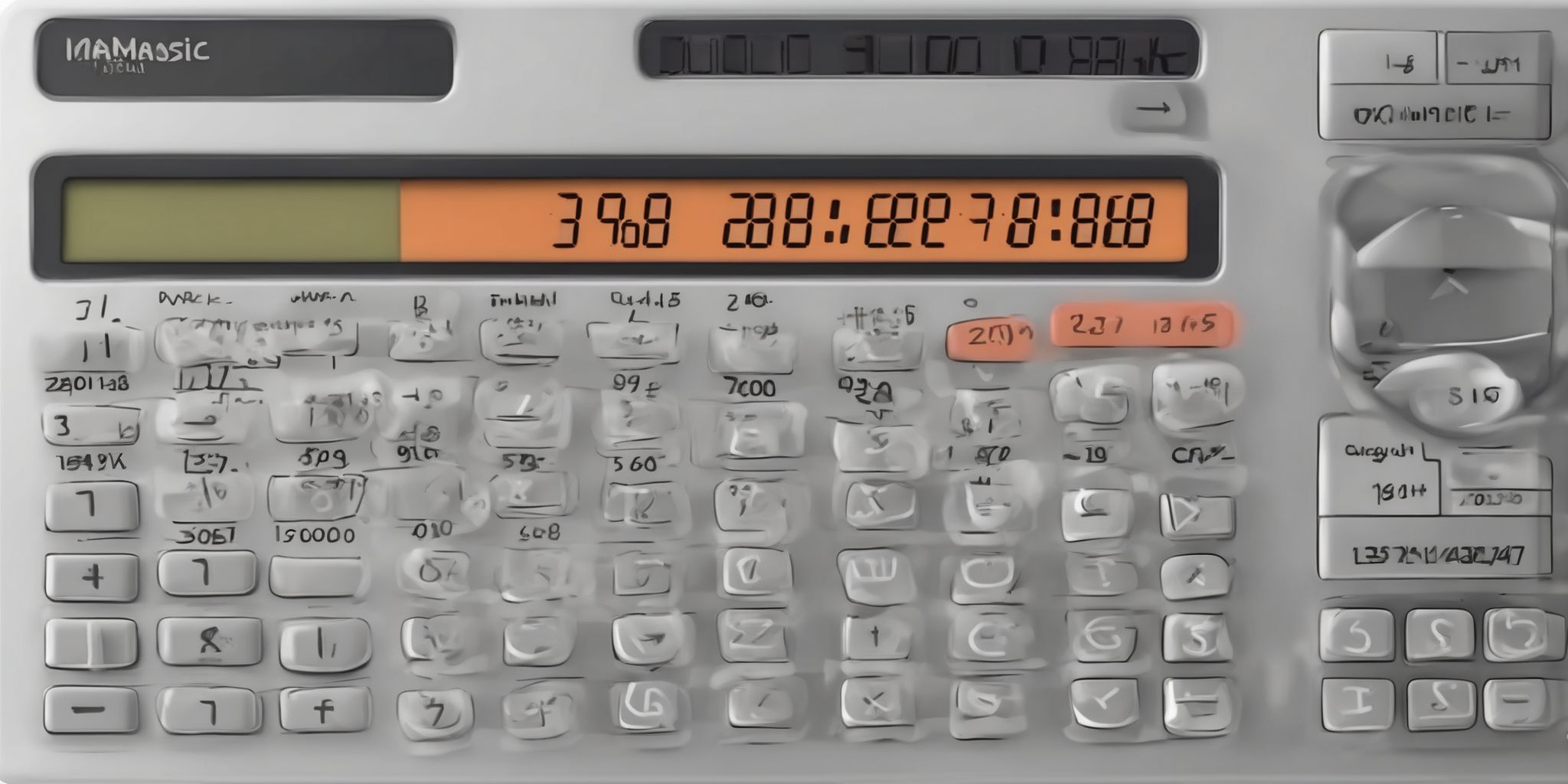Navigating Currency Fluctuations: Tips for Forex Traders
Currency fluctuations can feel like an unpredictable rollercoaster ride, constantly throwing forex traders for a loop. Whether it's the sudden surge of a currency's value or a startling dip in another, navigating these wild swings can make even the most experienced traders break a sweat. But fear not, fellow traders, for amidst the chaos lies opportunity.
In this article, we'll unveil some invaluable tips to help you untangle the perplexity of currency fluctuations and turn them to your advantage. So, buckle up and get ready to ride the waves of the forex market like a pro!
Understanding Currency Fluctuations
Currency fluctuations are a common occurrence in the forex market, driven by various economic and political factors. Currencies can appreciate or depreciate in value relative to each other, presenting opportunities and risks for traders. Economic indicators such as GDP growth rates, interest rates, inflation, and employment data can impact currency values. Political stability and geopolitical events also play a significant role. Traders must monitor market sentiment, including risk appetite and investor confidence. By comprehending these factors, traders can make informed decisions on when to buy or sell currencies, effectively navigating currency fluctuations to optimize their profits and manage potential losses. For instance, a country with robust economic growth might experience an appreciation in its currency, making it attractive for investment.
Importance of Navigating Currency Fluctuations for Forex Traders
Forex traders must navigate currency fluctuations to capitalize on potential profit opportunities and mitigate risks. Understanding and predicting these fluctuations helps traders make informed decisions regarding currency pairs.
For example, if a trader expects the value of one currency to rise against another, they can execute a trade to profit from the price difference. On the other hand, failing to navigate currency fluctuations can result in financial losses. For instance, sudden changes in exchange rates caused by economic or political events can significantly impact trade outcomes. By actively monitoring and adapting to currency fluctuations, forex traders can optimize their trading strategies and enhance their chances of success.
Factors Influencing Currency Fluctuations
Economic Indicators
Economic indicators are vital for understanding currency fluctuations. Factors such as GDP growth rates, interest rates, inflation rates, and employment data have a direct impact on a country's currency value. For instance, a country with strong GDP growth and low unemployment rates often experiences a strengthening currency. Traders should monitor these indicators to anticipate currency movements and adjust their trading strategies accordingly.
For example, if a country's GDP growth unexpectedly slows, it could lead to a decline in its currency value. By staying informed about economic indicators, forex traders can make more informed trading decisions and potentially profit from currency fluctuations.
GDP Growth Rates
GDP growth rates, a significant factor in currency fluctuations, reflect a country's economic health. When a nation experiences higher GDP growth, its currency tends to appreciate. This is because a growing economy attracts foreign investments, increasing demand for the currency. Conversely, lower GDP growth leads to currency depreciation. Forex traders can monitor GDP reports to anticipate currency movements and make informed trading decisions.
For instance, if a country's GDP growth exceeds expectations, traders might consider buying the currency. However, if GDP growth disappoints, they may choose to sell. Understanding the relationship between GDP growth rates and currency fluctuations can help traders capitalize on market opportunities.
Interest Rates
- Interest rates play a significant role in currency fluctuations.
- Higher interest rates attract foreign investors, leading to increased demand for the currency and strengthening its value.
- Conversely, lower interest rates can discourage foreign investment, resulting in a weaker currency.
- Central banks' decisions on interest rates are closely monitored by forex traders to anticipate potential currency movements.
- For example, when the Federal Reserve in the United States raises interest rates, the USD tends to appreciate against other currencies.
- Traders should keep a close eye on central bank announcements and economic indicators to gauge potential interest rate changes and their impact on currency fluctuations.
Inflation Rates
Inflation rates have a significant impact on currency fluctuations. When a country experiences high inflation, the value of its currency tends to decrease. This is because inflation erodes the purchasing power of the currency, making it less attractive to investors. On the other hand, a country with lower inflation rates may see its currency appreciate in value. Forex traders should closely monitor inflation indicators, such as consumer price indexes, to anticipate potential currency movements.
For example, if a country consistently reports high inflation, traders may consider shorting its currency against one with lower inflation rates to potentially profit from the expected devaluation.
Employment Data
Employment data is a significant factor influencing currency fluctuations. When a country's job market is thriving, it usually indicates a robust economy, attracting foreign investors and strengthening the local currency. On the other hand, a rise in unemployment or weak job growth may lead to currency depreciation. For instance, if a country reports higher-than-expected job creation, it can instill confidence in investors, resulting in an appreciation of the currency.
Conversely, disappointingemployment figures may dampen investor sentiment, leading to currency devaluation. Forex traders should closely monitor employment reports, such as non-farm payrolls, as they can provide valuable insights into future currency movements.
Political Factors
Political factors significantly impact currency fluctuations in the forex market. Changes in government policies, political stability, and geopolitical events all have the potential to affect currency values.
For example, a country experiencing political turmoil or uncertainty may see its currency weaken as investors lose confidence. On the other hand, political stability and positive developments can strengthen a currency. Traders should closely monitor political news and events to anticipate potential currency movements. Understanding the political landscape of countries is vital for forex traders as it provides insights into potential risks and opportunities in trading currency pairs.
Political Stability
Political stability is a significant factor that influences currency fluctuations. When a country experiences political stability, it tends to attract foreign investments, leading to a stronger currency. On the other hand, political unrest or uncertainty can cause a depreciation in the currency's value. Forex traders should closely monitor political developments and events such as elections, policy changes, and geopolitical tensions.
For example, political turmoil following the overthrow of a government can lead to a sharp drop in the currency's exchange rate. Traders can mitigate risk by staying updated on political news and considering the potential impact of political events on currency movements.
Geopolitical Events
Geopolitical events can significantly impact currency fluctuations. Political tensions, trade wars, and geopolitical crises often lead to increased volatility in forex markets. For instance, a diplomatic dispute or a change in government policy can cause a country's currency to depreciate rapidly. Traders need to stay informed about geopolitical developments and assess their potential impact on currency values.
It is essential to monitor news and understand how political events may disrupt global trade or provoke market uncertainty. By being aware of geopolitical risks, forex traders can adjust their strategies accordingly and take necessary precautions to mitigate potential losses or capitalize on opportunities.
Market Sentiment
- Market sentiment refers to the overall attitude, emotion, and perception of traders and investors towards a particular currency or market.
- It is influenced by a combination of economic, political, and social factors, as well as investor psychology.
- Understanding market sentiment can provide valuable insights into the direction of currency fluctuations.
- Positive market sentiment towards a currency can lead to its appreciation, while negative sentiment can result in depreciation.
- Traders should monitor news, economic indicators, and social media sentiment to gauge market sentiment.
- Examples of market sentiment indicators include the CBOE Volatility Index (VIX) and the Fear and Greed Index, which measure investor fear and confidence levels.
- Traders can use market sentiment to identify potential trading opportunities or align their strategies with prevailing sentiment.
Risk Appetite
Risk appetite is an important factor to consider when navigating currency fluctuations. It refers to the willingness of investors to take on risks in pursuit of potential financial gains.
During periods of high risk appetite, investors tend to favor higher-yielding currencies and assets, leading to their appreciation. Conversely, in times of low risk appetite, investors flock to safe-haven currencies, causing them to strengthen.
To gauge risk appetite, traders can analyze market sentiment indicators, such as stock market performance and volatility indexes. By monitoring these indicators, traders can better anticipate currency movements and adjust their trading strategies accordingly.
For example, during times of global economic uncertainty, risk aversion can lead to a surge in demand for safe-haven currencies like the Japanese yen or Swiss franc. Conversely, when optimism prevails, higher-yielding emerging market currencies may attract investors seeking higher returns.
Keeping a close eye on risk appetite can help forex traders anticipate and capitalize on currency fluctuations driven by market sentiment.
Investor Confidence
Investor confidence is a significant factor impacting currency fluctuations. When investors feel optimistic about the economic prospects of a country, they are more likely to invest, leading to an increase in demand for that currency. Conversely, a lack of confidence can result in currency depreciation. For instance, if investors lose faith in a government's ability to manage its economy, they may sell off its currency, causing its value to decline.
Therefore, keeping track of indicators that measure investor sentiment, such as stock market performance or consumer confidence surveys, can help forex traders anticipate potential currency fluctuations. By analyzing and understanding investor confidence, traders can make more informed decisions regarding their currency trades.
Strategies for Navigating Currency Fluctuations
Using Technical Analysis
Technical analysis is a valuable tool for forex traders navigating currency fluctuations. By identifying trends and key support and resistance levels, traders can make informed decisions.
For example, if a currency pair is consistently showing higher highs and higher lows, it indicates an uptrend, suggesting a potential buying opportunity. On the other hand, if the price repeatedly fails to break a certain level, it signals a strong resistance, indicating a potential selling opportunity. Technical indicators like Moving Averages or Bollinger Bands can also provide insights into market sentiment and potential price reversals. By combining technical analysis with other strategies, traders can enhance their understanding of currency fluctuations and make more informed trading decisions.
Identifying Trends
Identifying trends is a fundamental skill for forex traders navigating currency fluctuations. By analyzing historical price data, traders can spot patterns that indicate the direction in which a currency pair is moving. Trends can be categorized as upward (bullish), downward (bearish), or sideways (consolidation). Traders commonly use trendlines, moving averages, and chart patterns to identify trends.
For example, an upward trend may be identified by a series of higher highs and higher lows on a price chart. Understanding and following trends provides traders with insights into potential profit opportunities and helps them make informed trading decisions.
Support and Resistance Levels
Support and resistance levels are important concepts in navigating currency fluctuations. These levels represent price levels at which the currency tends to find support or face resistance. Traders often use these levels to identify potential entry and exit points for their trades.
A support level is a price level at which the currency has historically stopped falling and started to rebound. Traders may consider entering a long position when the currency reaches a support level, anticipating a potential bounce back.
On the other hand, a resistance level is a price level at which the currency has historically struggled to break above. Traders may consider selling or shorting the currency when it reaches a resistance level, anticipating a potential downward reversal.
By paying attention to support and resistance levels, forex traders can make informed decisions and adjust their strategies accordingly.
Fundamental Analysis
Fundamental analysis is a vital tool for forex traders navigating currency fluctuations. It involves analyzing economic factors and monitoring political developments to assess a currency's intrinsic value. By understanding economic indicators such as GDP growth rates, interest rates, inflation rates, and employment data, traders can evaluate a currency's strength. Similarly, keeping tabs on political stability and geopolitical events helps gauge a currency's stability.
For example, political uncertainty can lead to significant currency fluctuations. Traders leveraging fundamental analysis can make informed decisions and adjust their strategies accordingly, considering the broader economic and political context.
Analyzing Economic Factors
Analyzing economic factors is crucial for understanding currency fluctuations. Traders should assess indicators such as GDP growth rates, interest rates, inflation rates, and employment data to gauge the health of an economy. For instance, a robust GDP growth typically strengthens a currency, while high inflation undermines its value. Political stability also matters, as uncertainties often lead to volatility.
By monitoring economic fundamentals, traders can make informed decisions on currency trades.
For example, if a country shows strong economic data, traders may consider buying its currency against weaker counterparts. Understanding these economic factors helps traders navigate currency fluctuations and capitalize on potential opportunities.
Monitoring Political Developments
Staying informed about political events is crucial for forex traders as political factors play a significant role in currency fluctuations. Political stability, elections, and geopolitical tensions can all impact a country's currency value.
For example, news of a political scandal or a sudden change in leadership can cause currency volatility. Similarly, trade disputes or conflicts between nations can affect exchange rates. Traders should closely follow news, official statements, and policy decisions to anticipate potential currency movements and adjust their trades accordingly. By actively monitoring political developments, traders can identify opportunities and manage risks more effectively in the forex market.
Risk Management Techniques
Risk management techniques are vital for forex traders in navigating currency fluctuations. Setting stop loss orders can limit potential losses by automatically closing positions if the market moves against them. Implementing take profit orders allows traders to secure profits by automatically closing positions when predefined targets are reached. Diversifying currency holdings reduces exposure to a single currency and spreads risk across different currencies.
For example, a trader might hold positions in multiple currencies such as USD, EUR, and JPY. These techniques help manage risk and protect against adverse currency movements, increasing the chances of successful trading in volatile forex markets.
Setting Stop Loss Orders
Setting stop loss orders is a vital risk management technique in navigating currency fluctuations. It allows forex traders to automatically exit a position if the market moves against them, minimizing potential losses. By determining the maximum amount they are willing to lose on a trade, traders can set their stop loss level accordingly.
For example, a trader who buys euros at 1.15 may set a stop loss order at 1.13, ensuring a maximum loss of 200 pips. This protects traders from significant downside risks and ensures they don't let emotions drive their decisions. Properly setting stop loss orders can help traders safeguard their capital and maintain discipline in volatile currency markets.
Implementing Take Profit Orders
Implementing Take Profit Orders is a useful strategy for forex traders to capitalize on currency fluctuations. By setting a predefined profit target, traders can automatically close their positions once that target is reached, securing their gains.
For example, if a trader anticipates a currency pair to increase in value and identifies a favorable profit level, they can set a Take Profit Order at that level. If the market reaches that point, the order will be triggered, locking in the profit. This helps traders avoid emotional decision-making and ensures they don't miss out on potential profits when the market moves in their favor.
Diversifying Currency Holdings
Diversifying currency holdings is an effective strategy for managing the impact of currency fluctuations. It helps to spread the risk and potentially increase the chances of gaining from favorable exchange rate movements. Consider the following tips:
- Hold currencies from different countries to reduce exposure to a single currency's volatility.
- Allocate investments across various currency pairs to take advantage of potential gains.
- Consider holding stable currencies to minimize the impact of volatile markets.
- Regularly review and rebalance currency holdings based on market conditions.
- Use currency exchange-traded funds (ETFs) or mutual funds for diversification without the need for extensive research.
By diversifying your currency holdings, you can mitigate the risks associated with currency fluctuations and potentially enhance your overall trading performance.
Currency Fluctuations in Practice
Currency fluctuations can greatly impact forex traders' profitability. For instance, the British pound experienced significant volatility during the Brexit negotiations, leading to unpredictable price movements. Similarly, the US-China trade war affected the value of the yuan. Traders should monitor economic indicators, such as GDP growth rates and interest rates, to anticipate currency fluctuations.
Additionally, staying informed about political developments, such as political stability or geopolitical events, can help in making informed trading decisions. Technical analysis, with its focus on identifying trends and support/resistance levels, can offer insights into potential currency movements. Implementing risk management techniques, like setting stop loss orders and diversifying currency holdings, can help mitigate the impact of unexpected fluctuations.
Final thoughts
Forex traders, who engage in currency trading, need to navigate the ever-changing landscape of currency fluctuations. This article provides valuable tips to help traders deal with the challenges of unpredictable exchange rates. By staying informed about global economic trends and events, setting clear risk management strategies, and utilizing technical analysis tools, traders can be better prepared to make informed decisions to mitigate the impact of currency fluctuations.


